I was playing video games with my brother in the house when I heard a horrendous yell from the front yard. We ran outside to find my dad with his hand trapped underneath the car’s brake rotor when the car fell on him.
It seemed like we needed hours to get the car lifted back off of him. Every second was agonizing. Thankfully his hand healed, and he retained the full function of his digits.
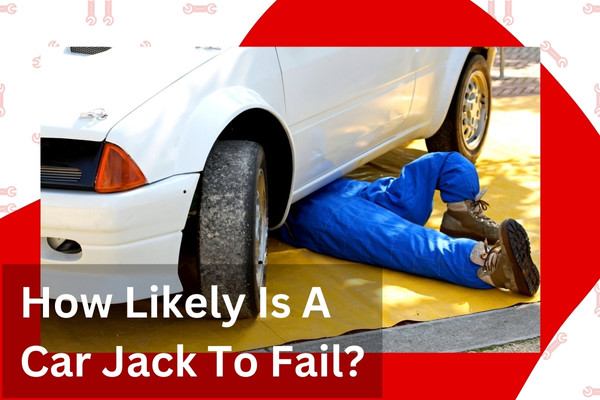
Growing up poor, we had to do all the mechanical work on our cars, but we didn’t have a concrete garage floor to work on. This meant we often worked on our cars on our front lawn. The front lawn wasn’t entirely level, and after a rain, the soft ground meant that a jack might sink into the ground and shift.
Even jack stands did not entirely mitigate the problem.
Later in my life, I found a thread on Reddit. Folks asked, “what small items do we trust our lives to.” Someone pointed out that many home mechanics overly trust the hydraulic seals on their car jacks. They will jack up their cars and then crawl underneath without using jack stands.
Most floor jacks are made by cheap Chinese companies who pay the bottom dollar to rush their products to US customers.
“Don’t trust your life to a 25-cent O-ring.” I don’t remember who gave me that advice, but it was some of the best life advice I have ever received.
While they work quite well, the risk of accidents is also high, especially when you factor in the myriad of dumb mistakes we car enthusiasts are apt to make.
It’s one reason why we have so many articles on this blog about using jack stands. Having a multiple-stage safety system is common sense.
The average vehicle weighs 4,094 pounds. If that falls on you, organ or limb damage is nearly guaranteed.
How Likely Is It for Your Jack Stand to Fail?
Research by the National Highway Traffic Safety Administration (NHTSA) on cases involving injuries associated with “jack failures” found that in one year, an estimated 4,822 people nationwide were treated in hospital emergency rooms for injuries resulting from the failure of a jack while engaged in an activity involving a motor vehicle.
Furthermore, the NHTSA study reveals that 74% of jack failures occur from jacks slipping out, not collapsing due to pressure loss. So to prevent jack failure, we want to look closely at jack stability. In my experience, bottle jacks and floor jacks generally bleed out slowly. Severe injuries occur when the jack slips out and there is a sudden collapse of the vehicle.
There is not a good count of annual deaths from falling vehicles. According to data we found, 147 mechanics were killed on the job between 2003 and 2005. This would put the count at 49 deaths per year. However, this also considers death by shooting and other unrelated deaths. Fewer than 49 people will likely die from a car falling on them.
Injuries Per Year From Car Jack Failures
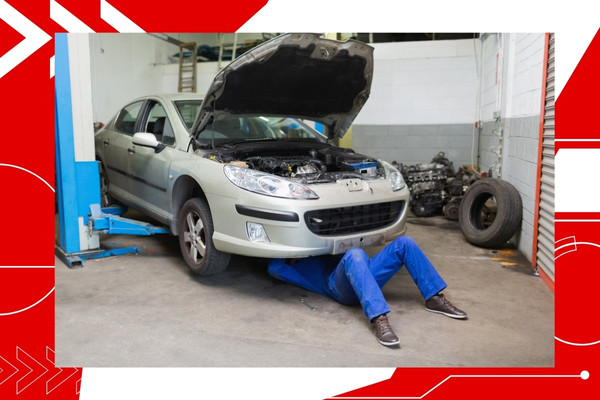
Car jacks are critical for lifting automobiles off of the ground. We have professional car lifts in professional shops for raising the vehicle and accessing the underside.
Even small maintenance tasks such as changing tires or changing the oil require raising the vehicle off of the ground.
The challenge is that if any of these devices fail or the vehicle slips off of the lift or the jack slips out from under the vehicle, the car will come crashing down to the ground and crush anything or anyone underneath it.
While death is rare, life-changing injuries are common. These include:
- Crushing injuries
- Lacerations
- Amputation of fingers or limbs
- Spinal cord injury
- Paralysis
- Permanent scarring or disfigurement
- Permanent disability
- Wrongful death
The National Highway Traffic Safety Administration estimates that more than 4,800 people in the United States are treated for car jack or jack stand failures.
Changing a flat tire is not as safe as you might think. About 768 people — or 16% of the total injuries — happen to people who change a car tire. The advantage for these users is that they tend to be to the side of the vehicle when the Jack fails.
The bulk of the injuries is more serious. 40% of the injuries occur during more extensive repairs of the vehicle. This generally means the user is working beneath the car when it falls on them.
Harbor Freight Jack Stand Recalls
Harbor Freight is well-known for its recalls in 2020. Harbor Freight recalled 1.7 million Pittsburgh Automotive Jack Stands in a series of famous recalls.
I find this recall especially disturbing. The jack stand is considered the last chance safety investment. When Harbor Freight recalled their 3-ton and 6-ton jack stands (SKUs 56371, 61196, and 61197), a large population of DIY mechanics was at risk every time they climbed under their car.
On these jack stands manufactured by Pittsburgh Automotive, due to worn tooling in the factory, the pawl that holds the jack stand up was not shaped properly, causing the release lever to not engage with the stand rail to hold it up safely.
Everyone knows about the big recall, but a smaller recall was announced in July 2020 for the 3-ton Jack stand (SKU 56373) that was not safe due to a welding defect in the frame.
That said, aside from the recalls in 2020, we have not seen many recalls on many Harbor Freight jacks.
How to Use a Jack Stand Safely
Since most jack failures are due to the jack slipping out, it becomes important for the user to understand the best practices they can invest in. Here are some safety tips to improve your odds.
Leave the Floor Jack as Backup After Setting the Car On Jack Stands
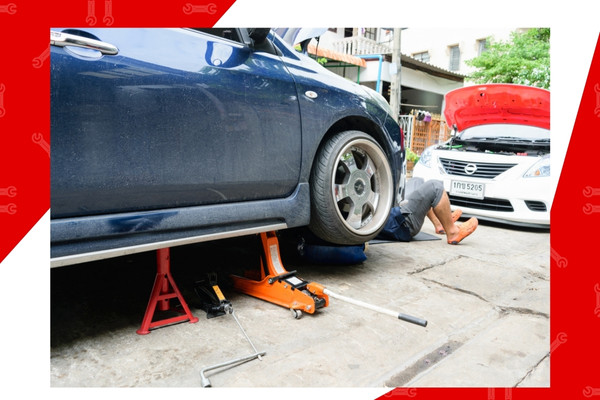
This is called “double-jacking. I almost always do this. After I have installed the jack stands and lowered the car onto the jack stands, I leave the car jack engaged. Ultimately, I want more than one device holding the car up. I’ve even been known to install two jack stands as added protection.
Work On a Level Concrete Surface
Having a level, solid surface to work on is the most important step in avoiding jack failure.
Never place your jacks on an incline. Most of our driveways have a slight slope to encourage water runoff, and you will need to move your car to a level lot to work to keep it from rolling off of the stands.
Additionally, working on dirt can be unsafe. Dirt can get rained on and become soft, which will cause a jack to tip and fall. You really want your jack to rest on a hard surface. When I have to work on dirt, I use a 4×4′ piece of 3/4-inch plywood on which I set my jacks. The plywood creates a large, flat, strong surface that has worked well to provide jack stability.
Check That the Jack Stands Are Secure
The key thing in jack stability is where you place the jack under the car. Cars all have clearly delineated jack points where the car should be lifted. On my Ford Expedition, there are 4, rubber pads where the jack should be set. My Prius has a small notch and an arrow in the frame where the jack should be placed. Your owner’s manual will also show where the jack point is.
You also need to ensure that the jack stands are resting securing on the ground. All jack stands being used should be equal in height so that the car is as level as possible. Before I climb under the car, I give it a physical shake to check for how secure the jack stands are.
Never Overload Your Jack Stands
Every jack and jack stand has a weight rating printed on it. For jack stands, they should be able to hold 200% of their rated load for 10 minutes. A car jack should be able to hold 150% of its rated load.
That said, I prefer to go the other way with those numbers, and I want to buy twice of much jack as I need. I work on a lot of SUVs and Trucks, so I invest in 3-ton truck jacks, and 6-ton Jack stands. (I also like that the 6-ton jack stands tend to be taller, giving me more room to work under my car).
If your vehicle weighs 4,000 pounds and uses a 2-ton jack on one corner of it, then the jack is well within the range of what you are using it for. However, if the vehicle weighs 8,000 pounds, you are still within the range of the rating for that jack, but you are getting closer to the upper end of the rating.
Can Damage Your Car By Jacking It?
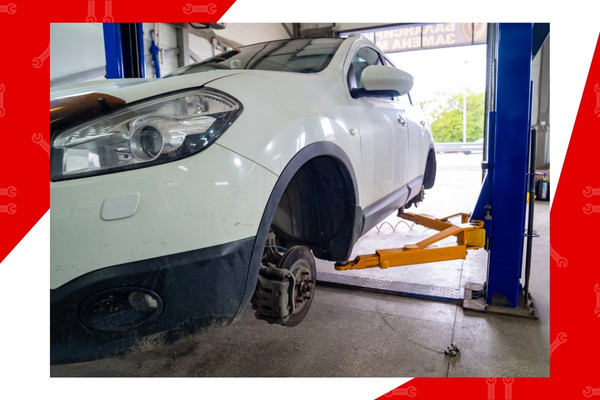
If you apply a jack to the wrong part of your car, the jack can bend that part. I’ve seen axles bent on front-wheel drive cars and vehicle stabilizers bent on the rear of cars. I’ve seen parts bent on cars that took me half of a day to find out what they are called so I could order a new one.
If you follow the owner’s guide, you can normally find where the car should be placed.
In most cases, jacking on the car’s frame rails or the marked jack point is always a safe bet. The Rear Axle can be a good place to jack it from on Larger vehicles.
The real concern is when you get it jacked, but the part you have jacked it on suddenly fails. Not only is jacking your car from the wrong place dangerous, but it is also extremely expensive.
Jack Stands Versus Cinder Blocks

As a kid, I felt that cinder blocks were one of the most secure options. So when I didn’t have jack stands, I would jack the car up and set it on cinder blocks.
I still feel like it isn’t the worst option, but there are two risks with cinder blocks. The first risk is that they are not the most stable. The second risk is that the cinder blocks have been known to crack, allowing the car to fall.
These days, I might store an old car on cinder blocks, but I wouldn’t use them to work on a car, and I wouldn’t use cinder blocks if I thought kids might be playing on or underneath the car.
I have a few friends who screw 4×4’s together to create a blocking system that they use in addition to their jack stands. My buddies are like me; none of us want to die while working underneath our cars. The more support, the better.
Use Chocks
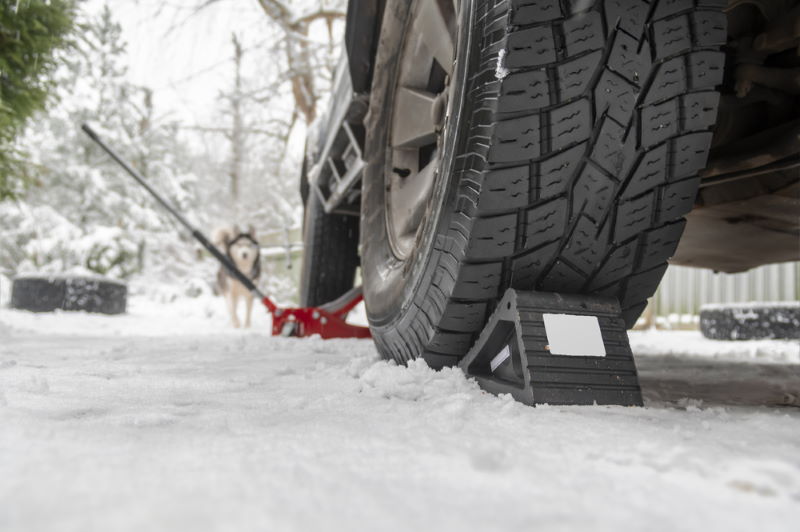
When any part of the car is in the air, the other wheels should be secured with wheel chocks. Many people don’t think about this when jacking up the rear wheels; the opposite, or front wheels, should be secured with wheel chocks.
Can A Jack Fail?
The data shows that car-crushing injuries are one of the leading risks for a mechanic. That said, most car jacks will experience catastrophic failure, and the most significant risk comes from the jack sliding out from under the car due to improper placement.
 Skip to content
Skip to content

